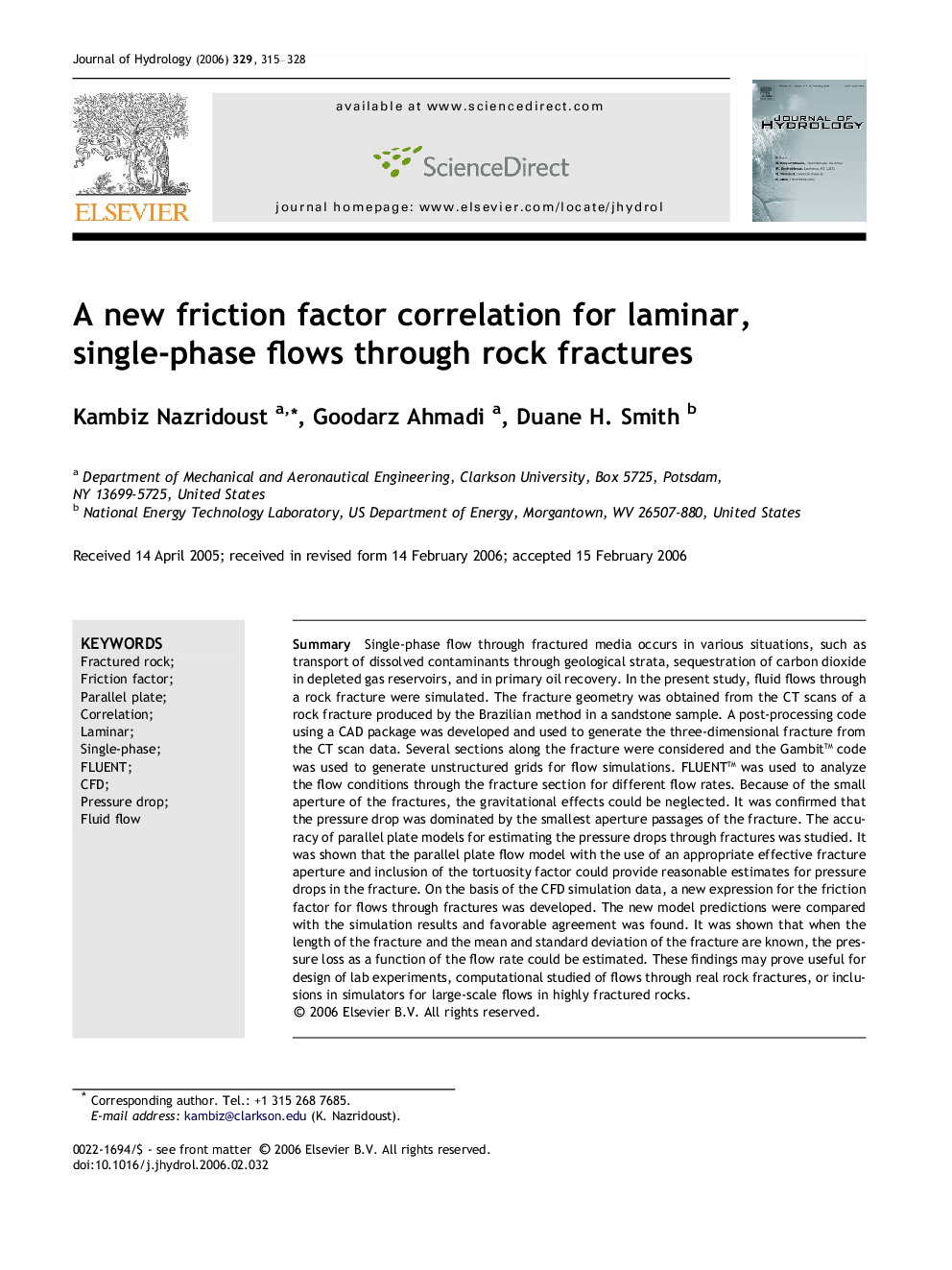| Article ID | Journal | Published Year | Pages | File Type |
|---|---|---|---|---|
| 4580243 | Journal of Hydrology | 2006 | 14 Pages |
SummarySingle-phase flow through fractured media occurs in various situations, such as transport of dissolved contaminants through geological strata, sequestration of carbon dioxide in depleted gas reservoirs, and in primary oil recovery. In the present study, fluid flows through a rock fracture were simulated. The fracture geometry was obtained from the CT scans of a rock fracture produced by the Brazilian method in a sandstone sample. A post-processing code using a CAD package was developed and used to generate the three-dimensional fracture from the CT scan data. Several sections along the fracture were considered and the Gambit™ code was used to generate unstructured grids for flow simulations. FLUENT™ was used to analyze the flow conditions through the fracture section for different flow rates. Because of the small aperture of the fractures, the gravitational effects could be neglected. It was confirmed that the pressure drop was dominated by the smallest aperture passages of the fracture. The accuracy of parallel plate models for estimating the pressure drops through fractures was studied. It was shown that the parallel plate flow model with the use of an appropriate effective fracture aperture and inclusion of the tortuosity factor could provide reasonable estimates for pressure drops in the fracture. On the basis of the CFD simulation data, a new expression for the friction factor for flows through fractures was developed. The new model predictions were compared with the simulation results and favorable agreement was found. It was shown that when the length of the fracture and the mean and standard deviation of the fracture are known, the pressure loss as a function of the flow rate could be estimated. These findings may prove useful for design of lab experiments, computational studied of flows through real rock fractures, or inclusions in simulators for large-scale flows in highly fractured rocks.
